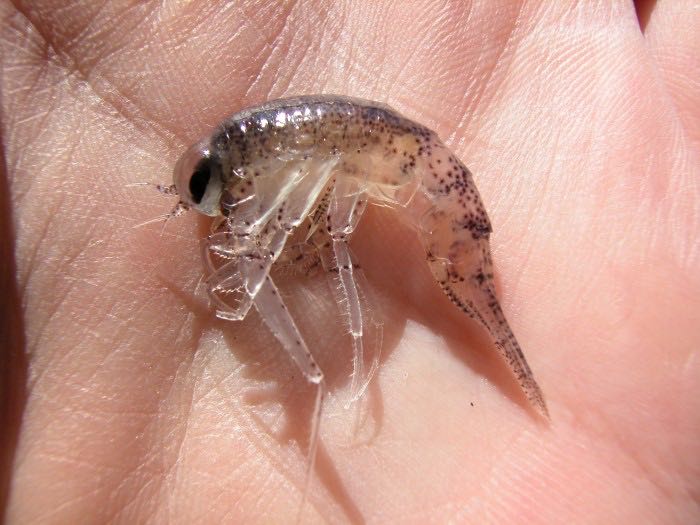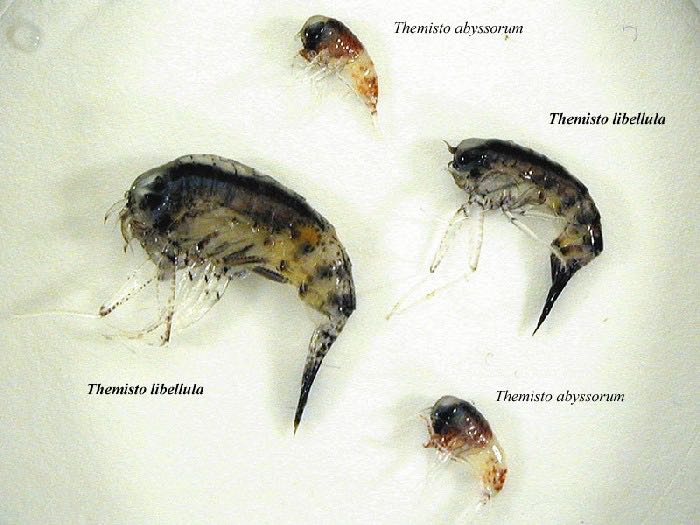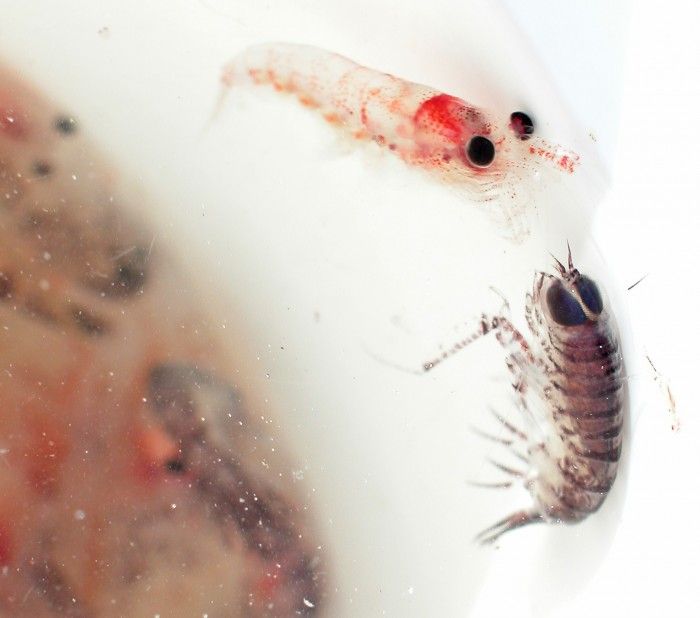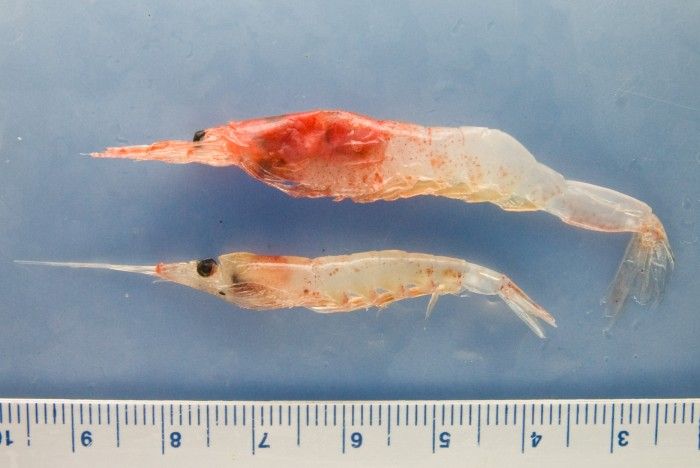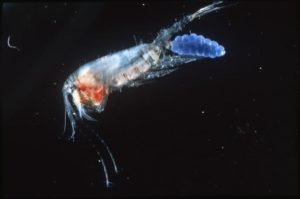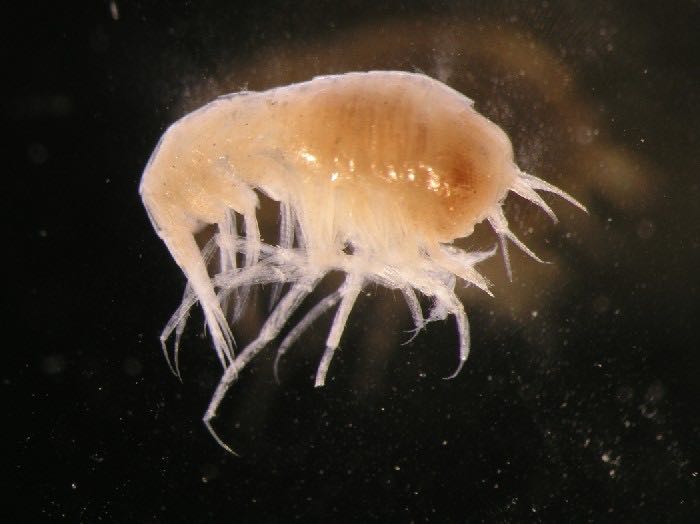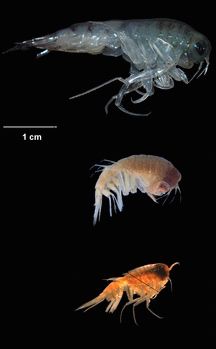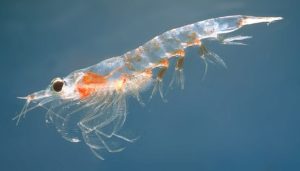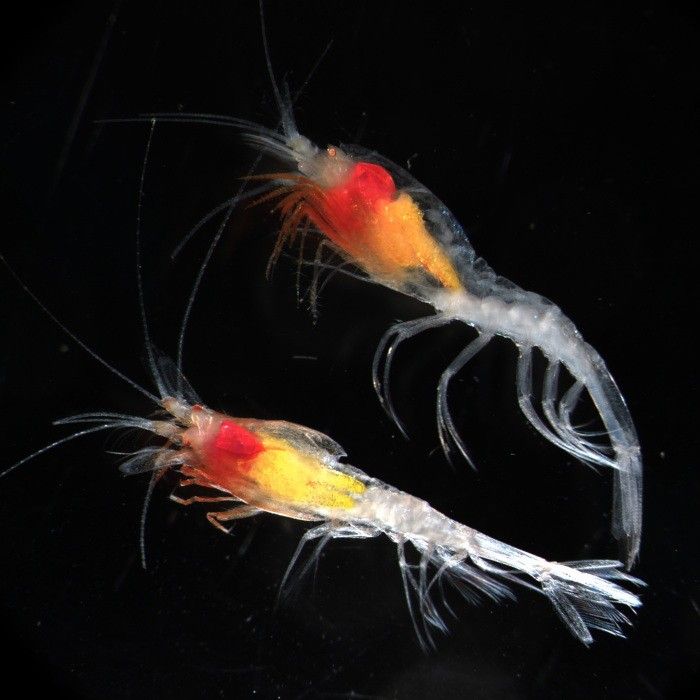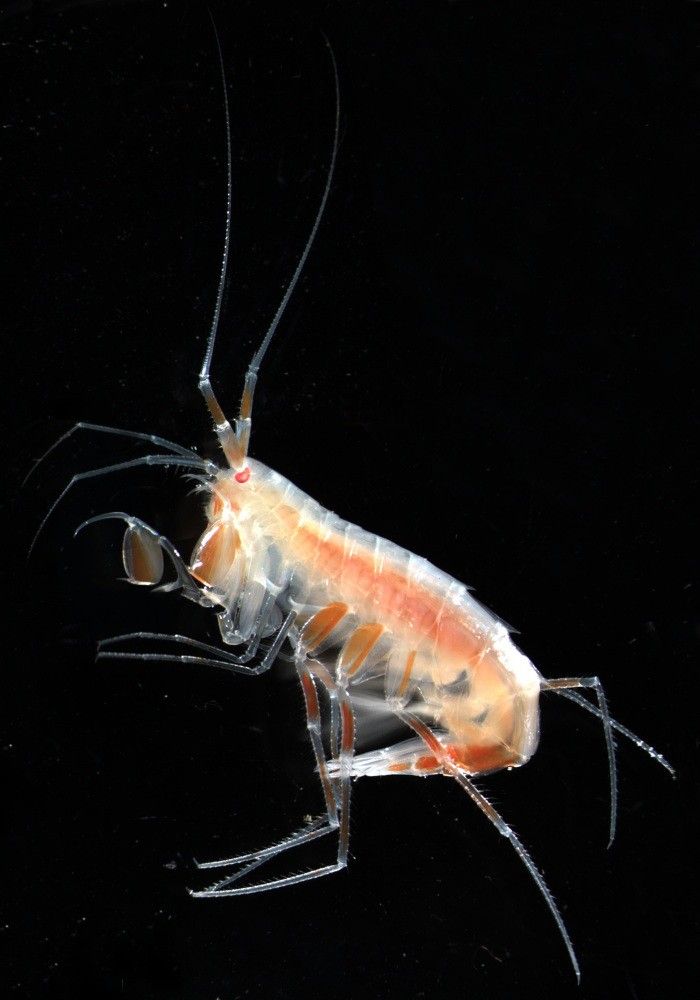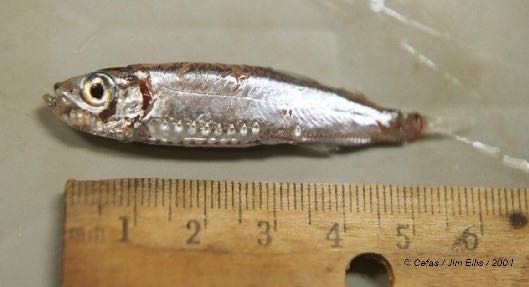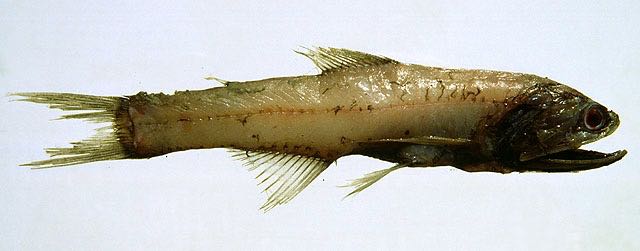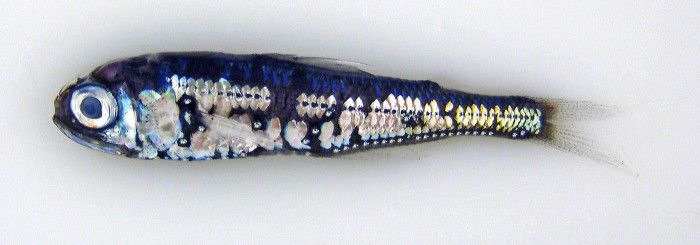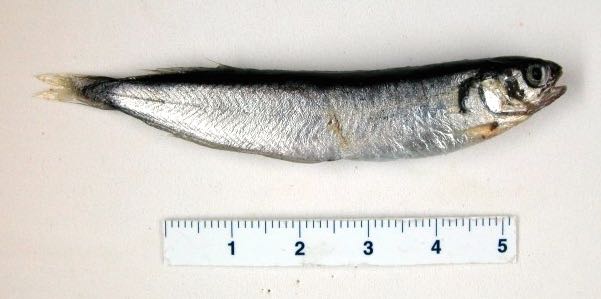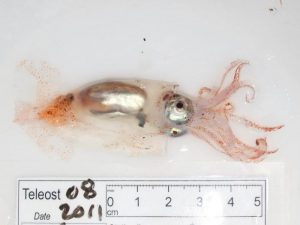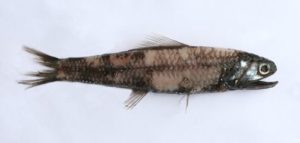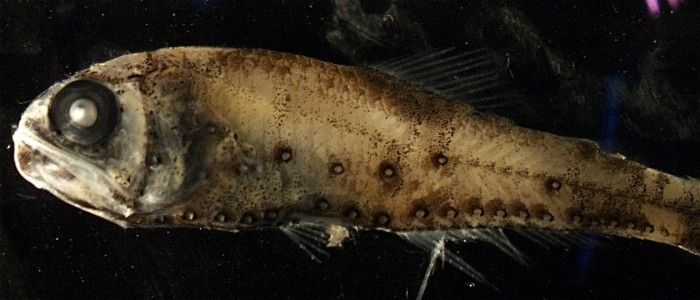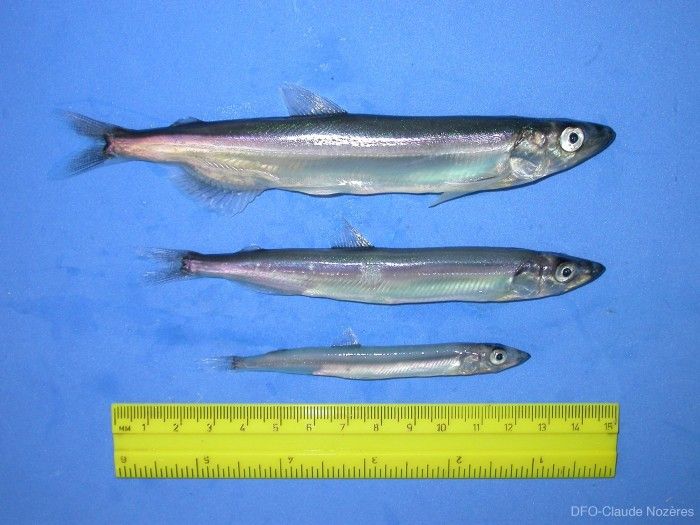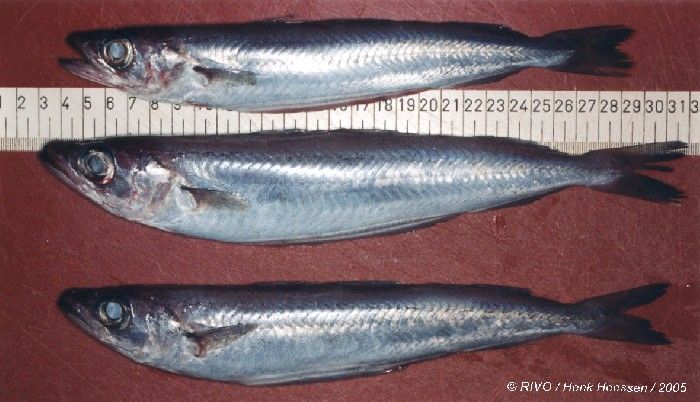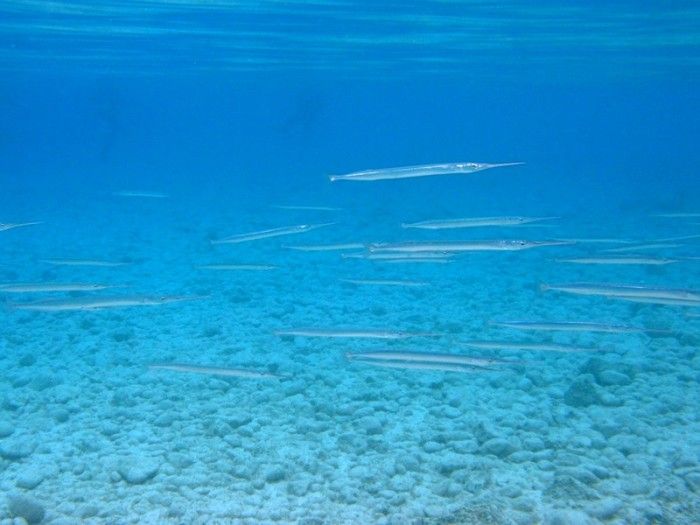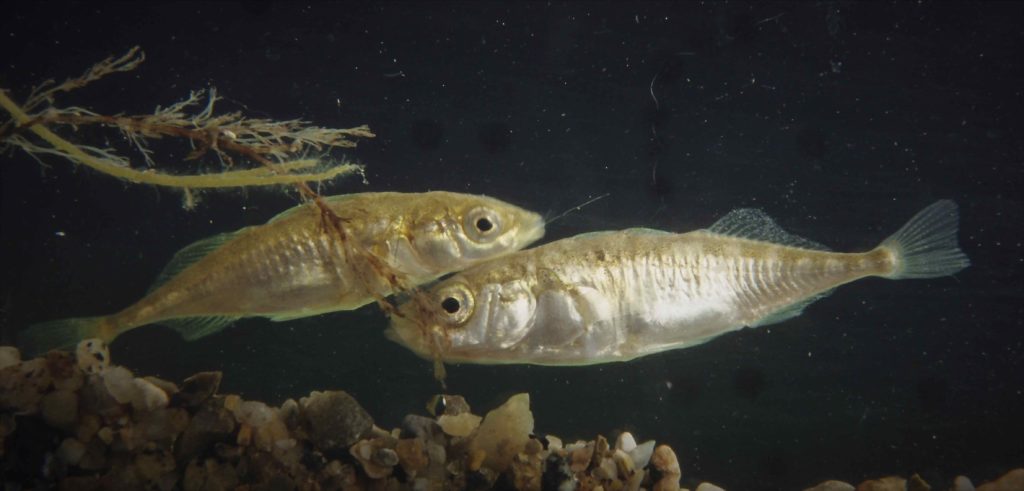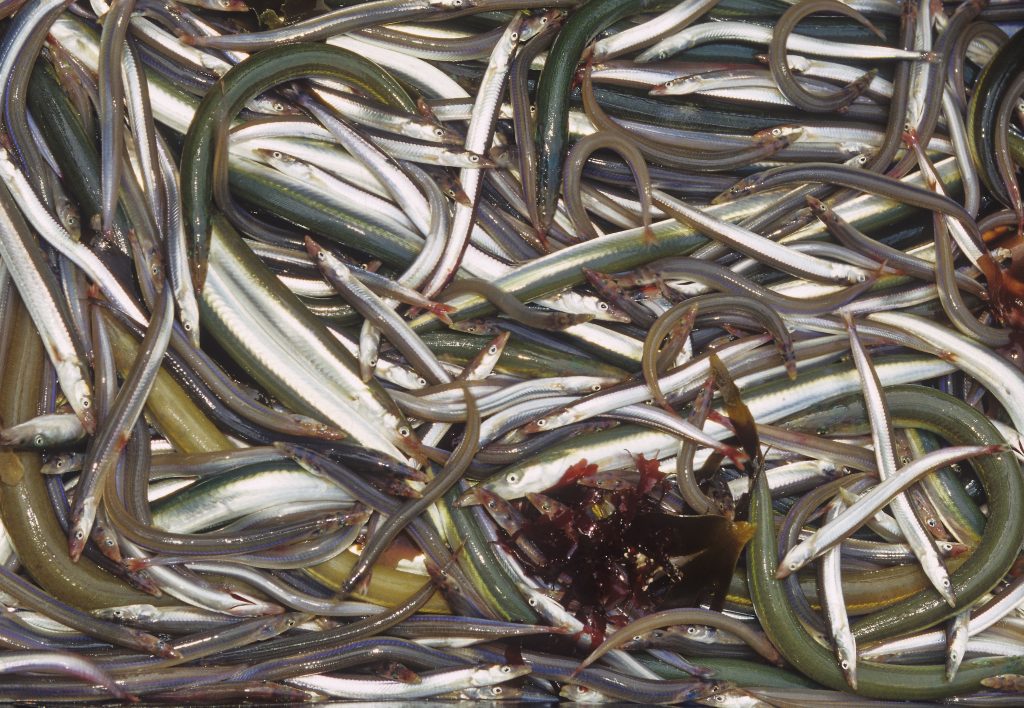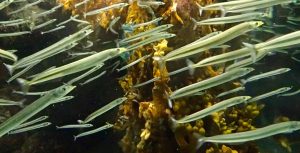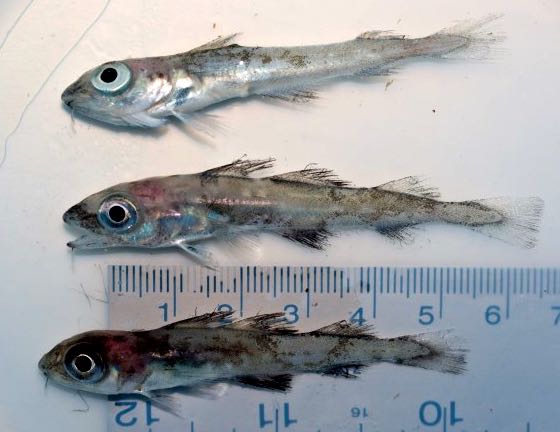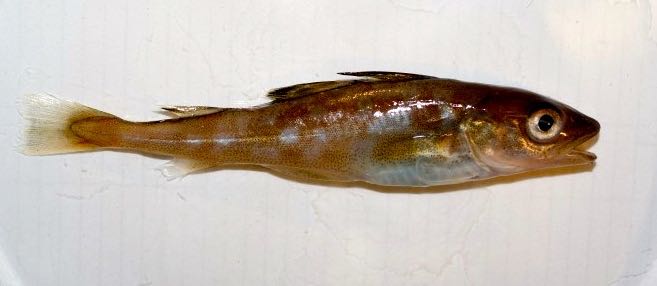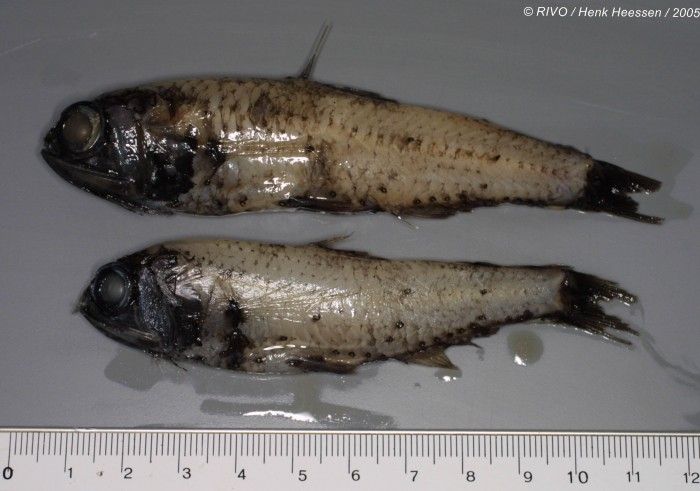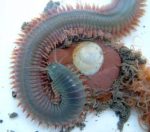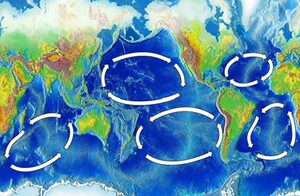What do sea trout eat at sea?” – This question has been the focus of extensive research, and we’ve endeavoured to compile an intriguing page on the subject. We aim to showcase the diverse array of aquatic life forms that sea trout feed on in marine and freshwater habitats. Similar to our Fishmadman pages on “What do salmon eat in the sea?”, the text and images will serve as a guide for crafting effective fishing flies tailored to the feeding habits of sea trout
Three forms – one fish
The brown trout, scientifically known as Salmo trutta, is a widely distributed and highly adaptable species that originated in European waters. It has achieved global success due to its ability to thrive in diverse environments. Like many other members of the Salmonidae family, the brown trout exhibits significant variations in its life cycle.
Brown trout populations can be found ranging from 42°N to as far north as 71°N. There are three primary forms of brown trout:
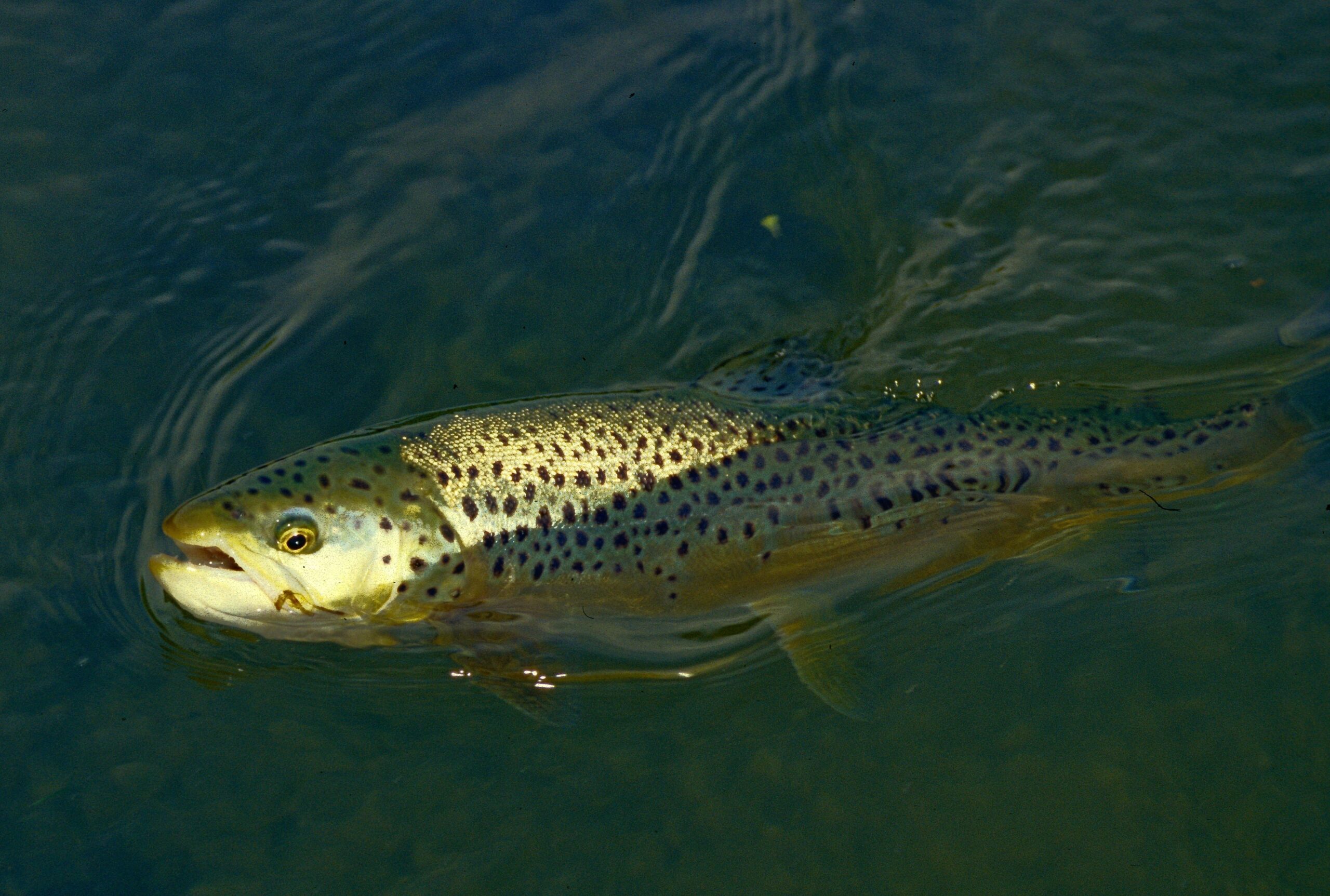
The river-resident brown trout (Salmo trutta morpha fario) completes its entire life cycle within freshwater river habitats. Originated in European waters and boasts a widespread presence across the globe, thriving on most continents. These very brown trout from Europa serve as the distant ancestors of the immense Tierra del Fuego sea trout and the prized brown trout inhabiting the rivers of New Zealand.
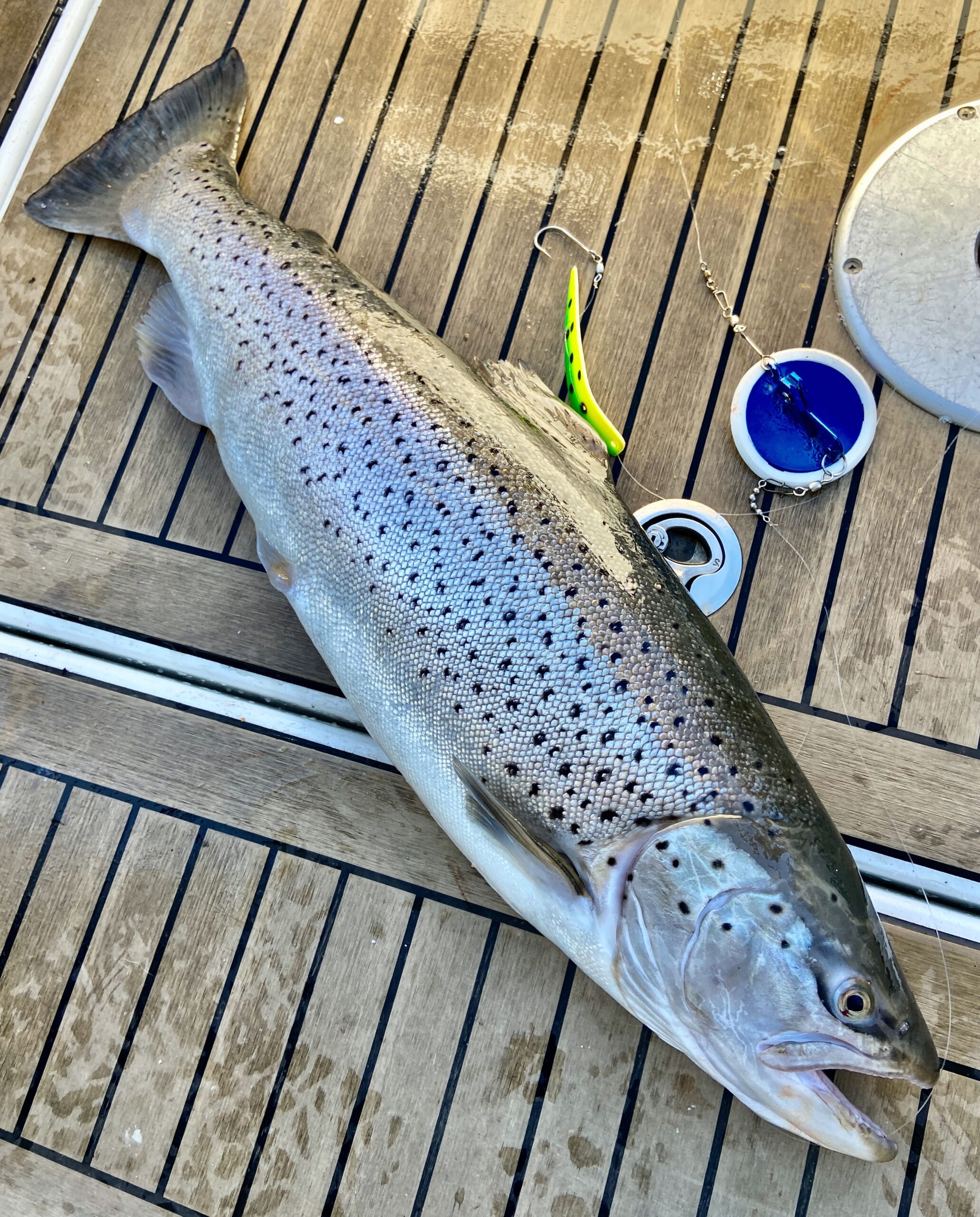
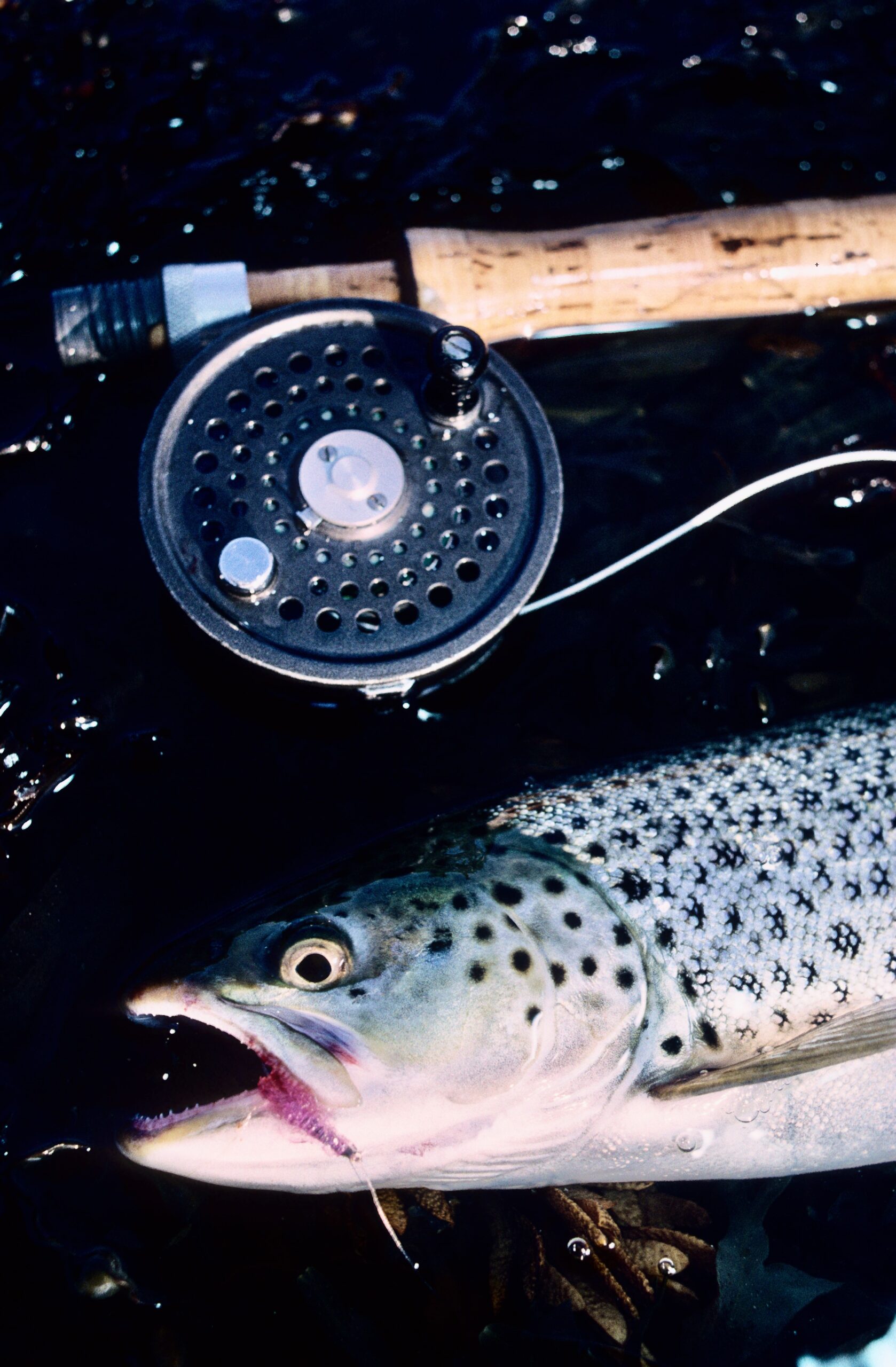
The sea-migratory brown trout, (Salmo trutta morpha trutta) but commonly referred to as sea trout, starts its life as a river-resident trout. However, it eventually migrates downstream to the sea, where it spends a substantial portion of its life cycle.
These distinct forms of brown trout demonstrate the species’ remarkable adaptability and ability to thrive in various aquatic environments. On the following pages, we will be looking into some of the fascinating aspects of the form of brown trout we know as the sea trout.
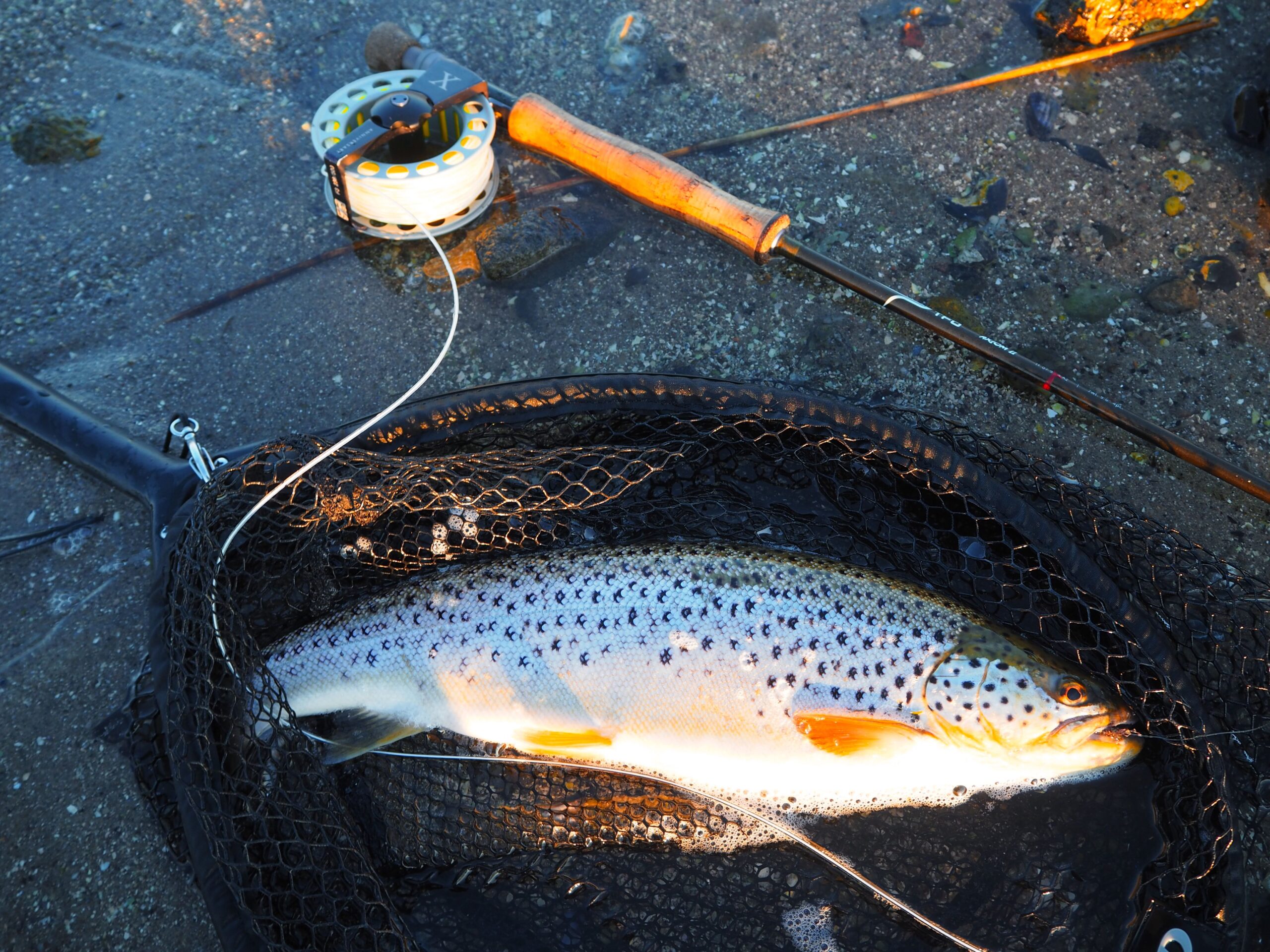
Living inside fjords and easturies
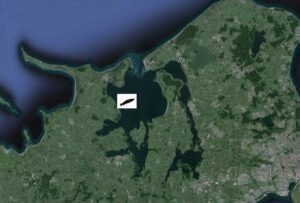
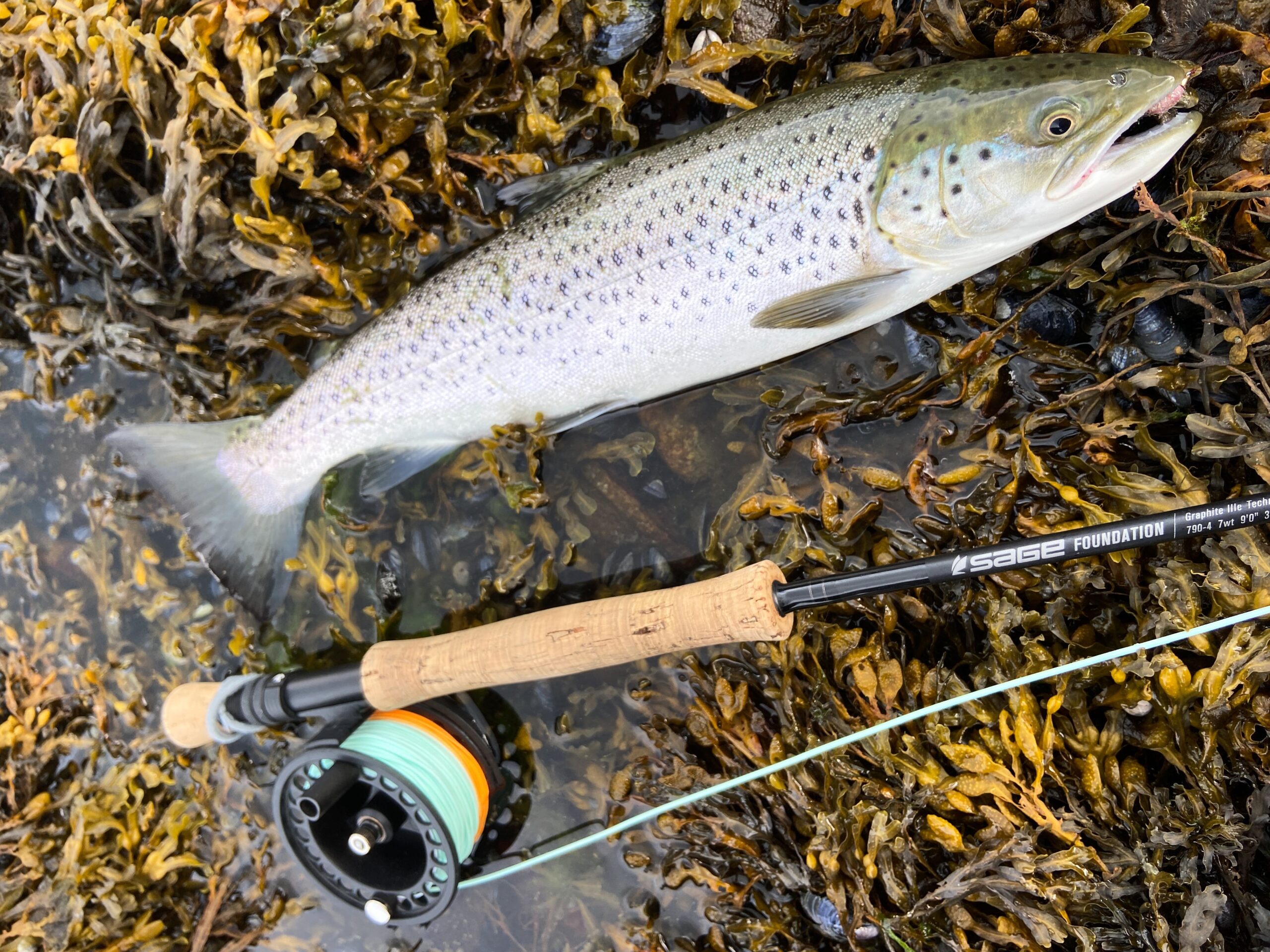
Living on the open coast
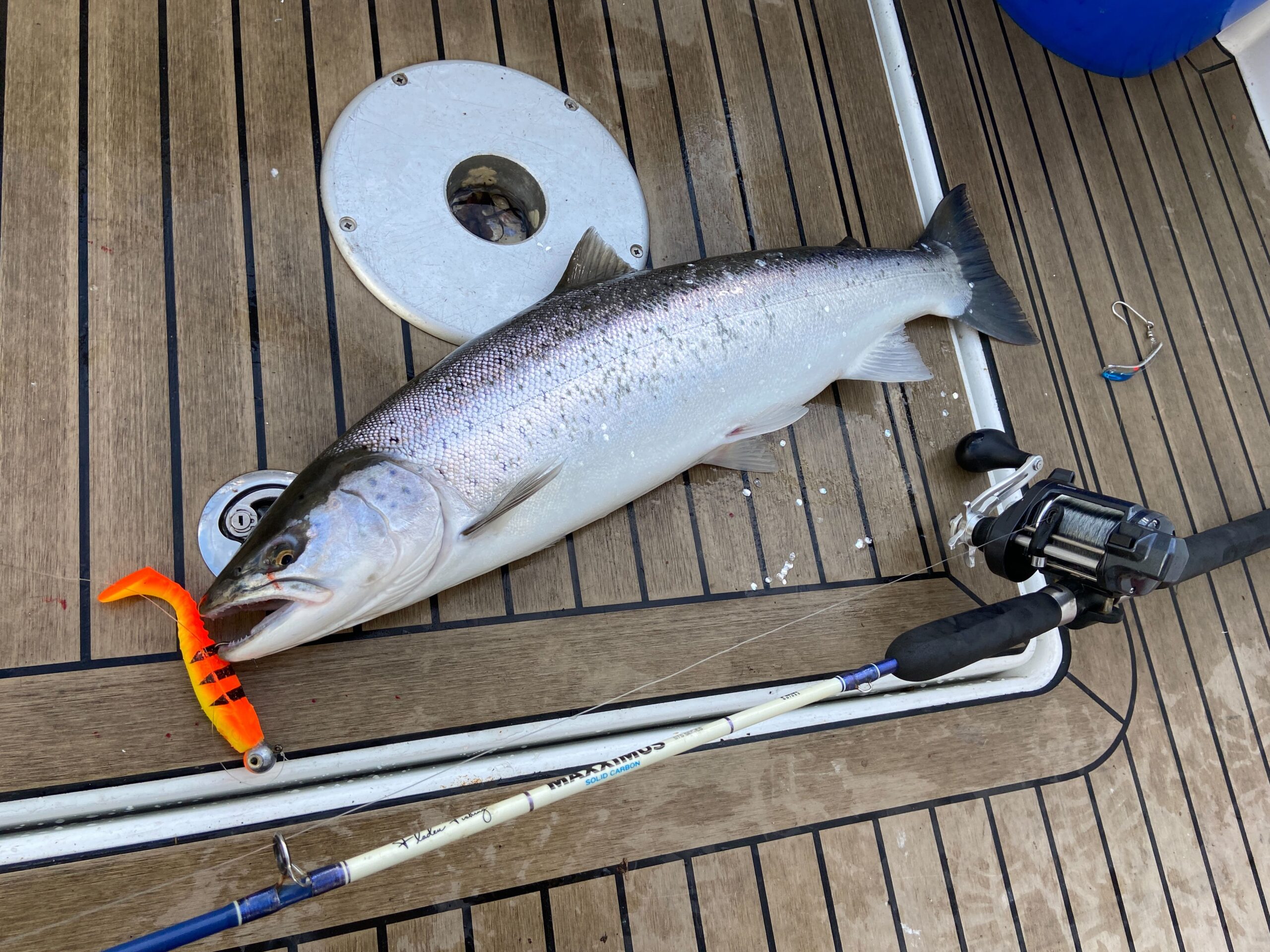
Sea trout living at sea
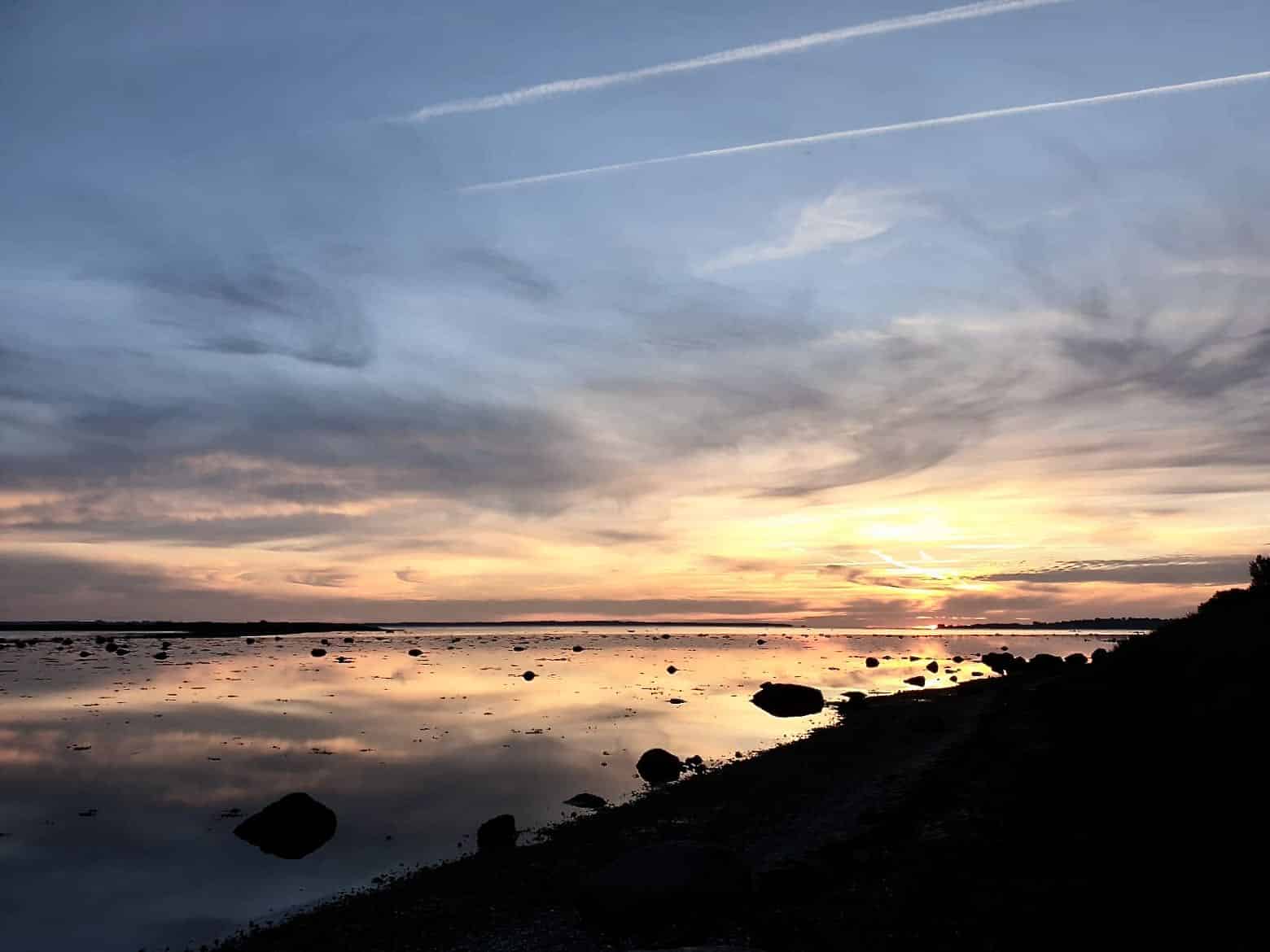
Migrations along coastlines up to 580 km (360 miles) away from the natal river were observed in the Geo-Tag survey conducted in 2019.
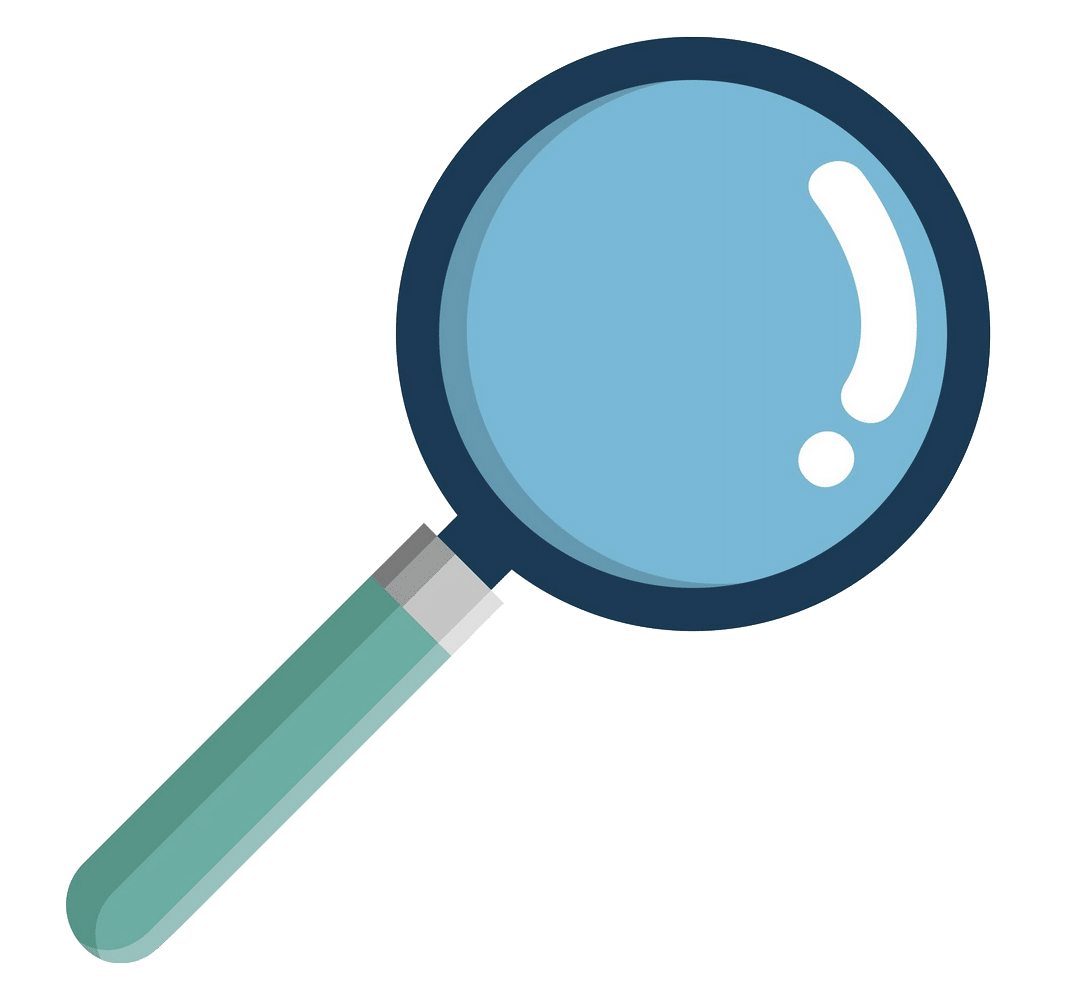
How did we determine what sea trout was eating at sea?
In the following sections and accompanying images, we present a compilation of observations gathered over the years by both ourselves and fellow anglers regarding the feeding habits of sea trout. These insights are drawn from specimens caught in various regions of Scandinavia and Scotland. Furthermore, in our endeavor to comprehend the marine diet of sea trout, we have referenced several marine biological surveys on the topic: “What do sea trout eat in the sea?” Throughout the text, we offer details and links to these surveys, should you wish to explore the subject further.
Finally, we have incorporated images from a.o: World Register of Marine Species and Dorris to illustrate the prey that sea trout consume in the most informative manner possible.
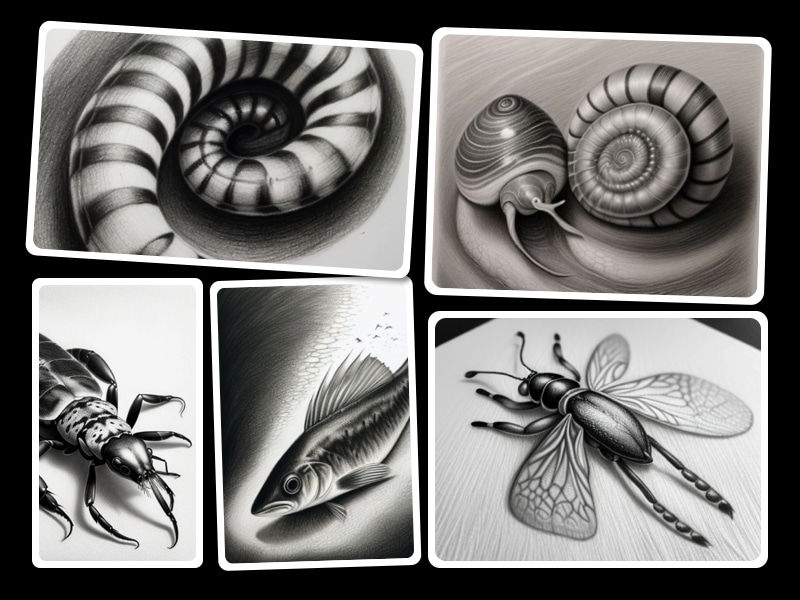
We will focused on five groups of prey that sea trout feed on
-
Fish
-
Worms
-
Crustaceans
-
Insects
-
Molluscs
The fish sea trout eat
Herring and sprat: Key food sources for bigger sea trout
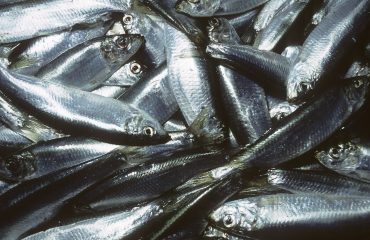
Baltic sea trout thrives on protein-rich diett

Most sea trout examined for stomach content were in their second year of marine life, with an average annual weight increase of 2,470 grams (2.47 kilo). They consumed approximately 14 grams of food per kilogram of body weight daily.
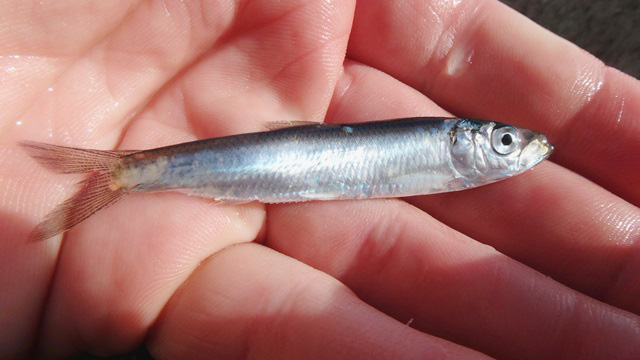
A European Sprat (Sprattus sprattus) as found in the Baltic. Photo by Hendron, C. Register of Marine Species. Shown here is the Common European Sprat (Sprattus sprattus), which serves as the main food source for Atlantic salmon inhabiting the Baltic Sea. These sprats usually reach a size of 14 to 15 centimeters.
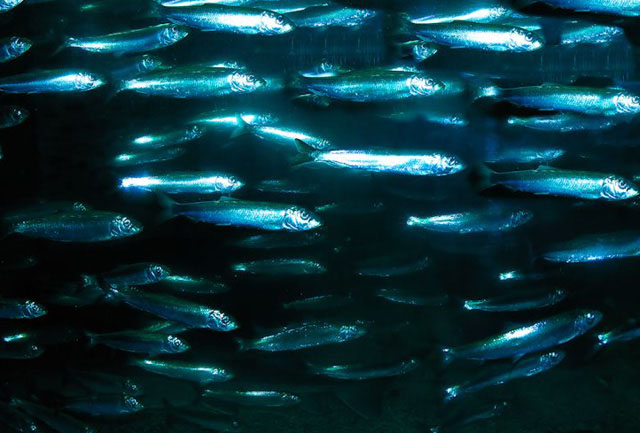
Herring is a staple on the menu for sea trout
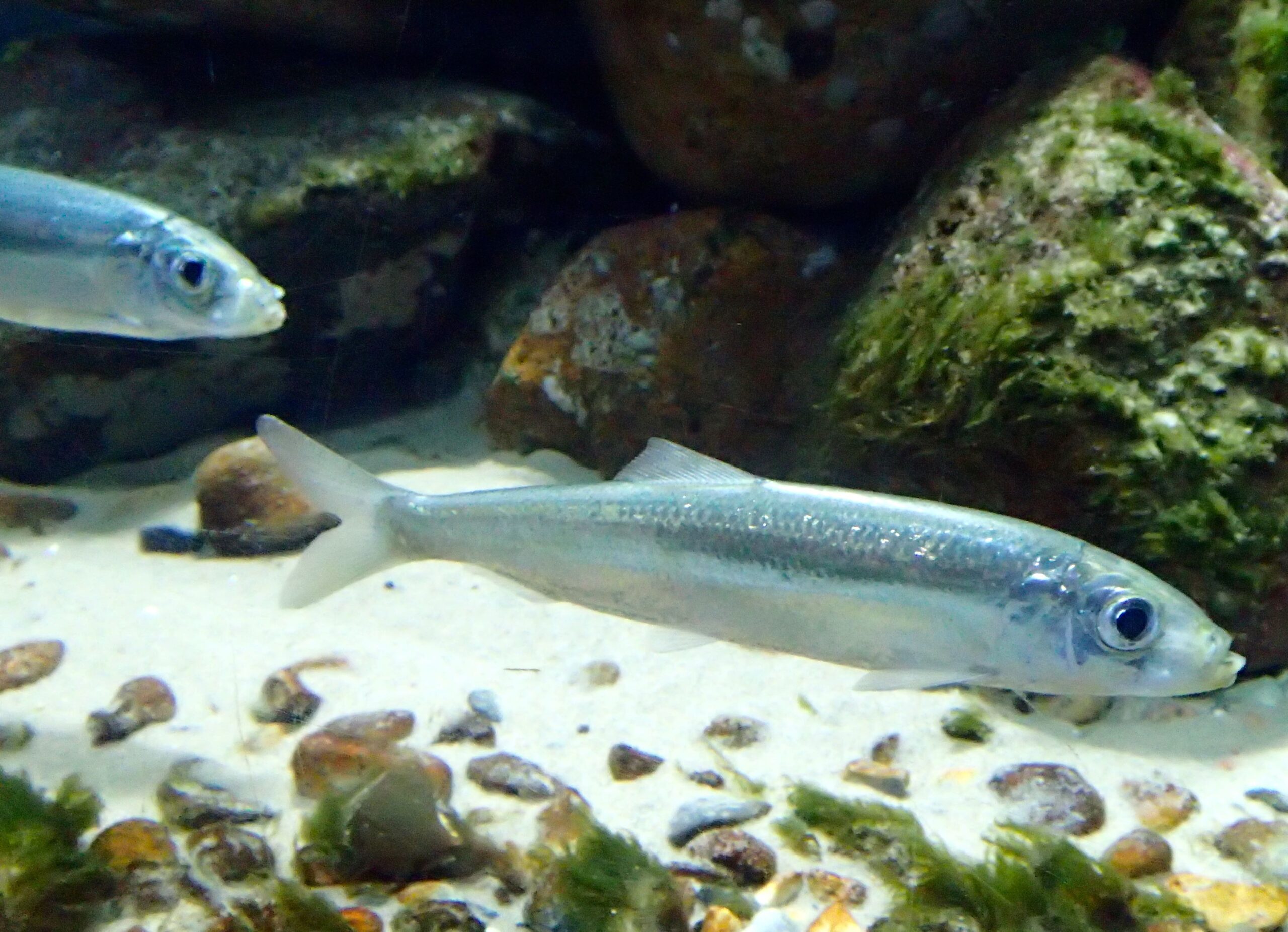
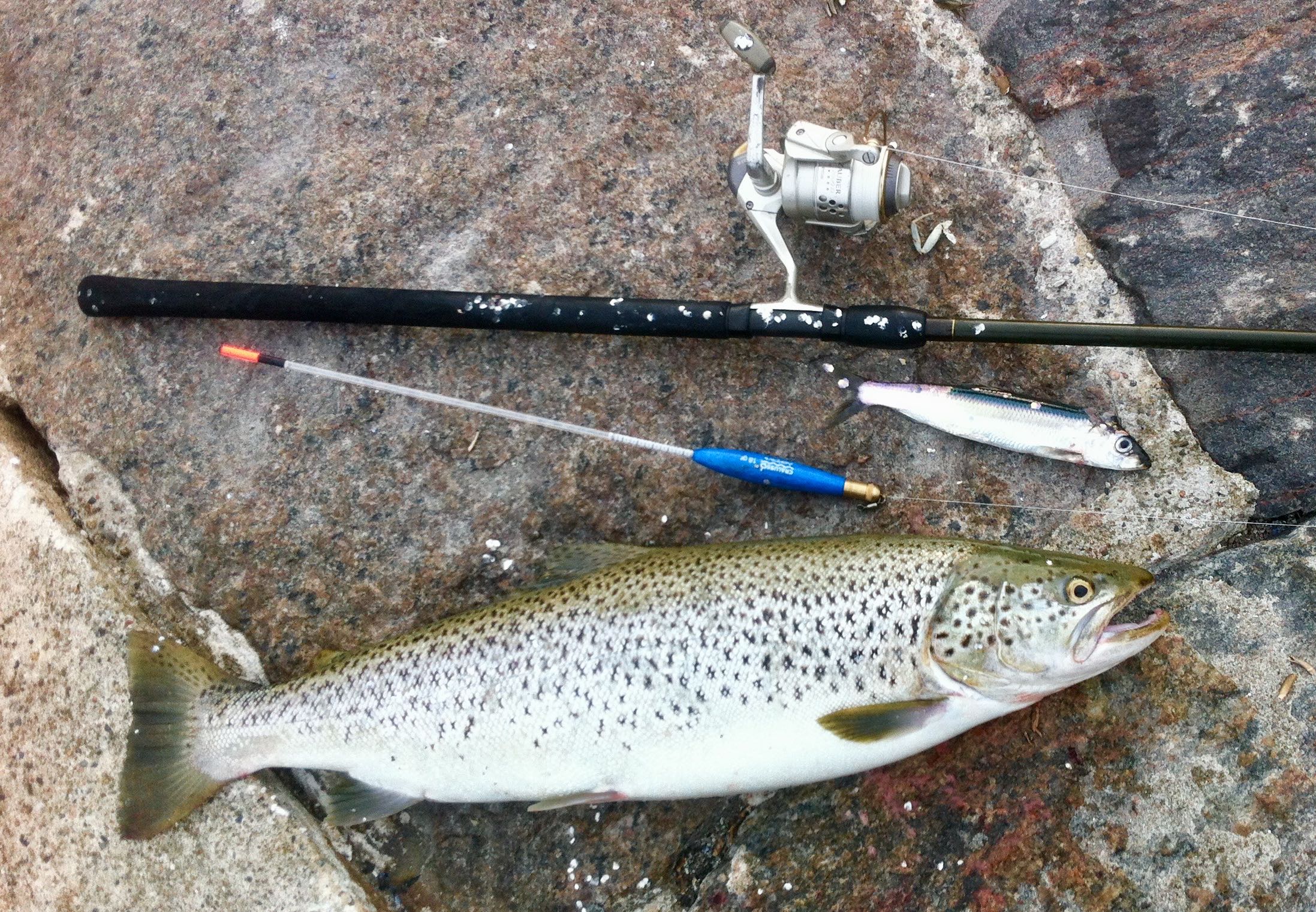
Matching the hatch
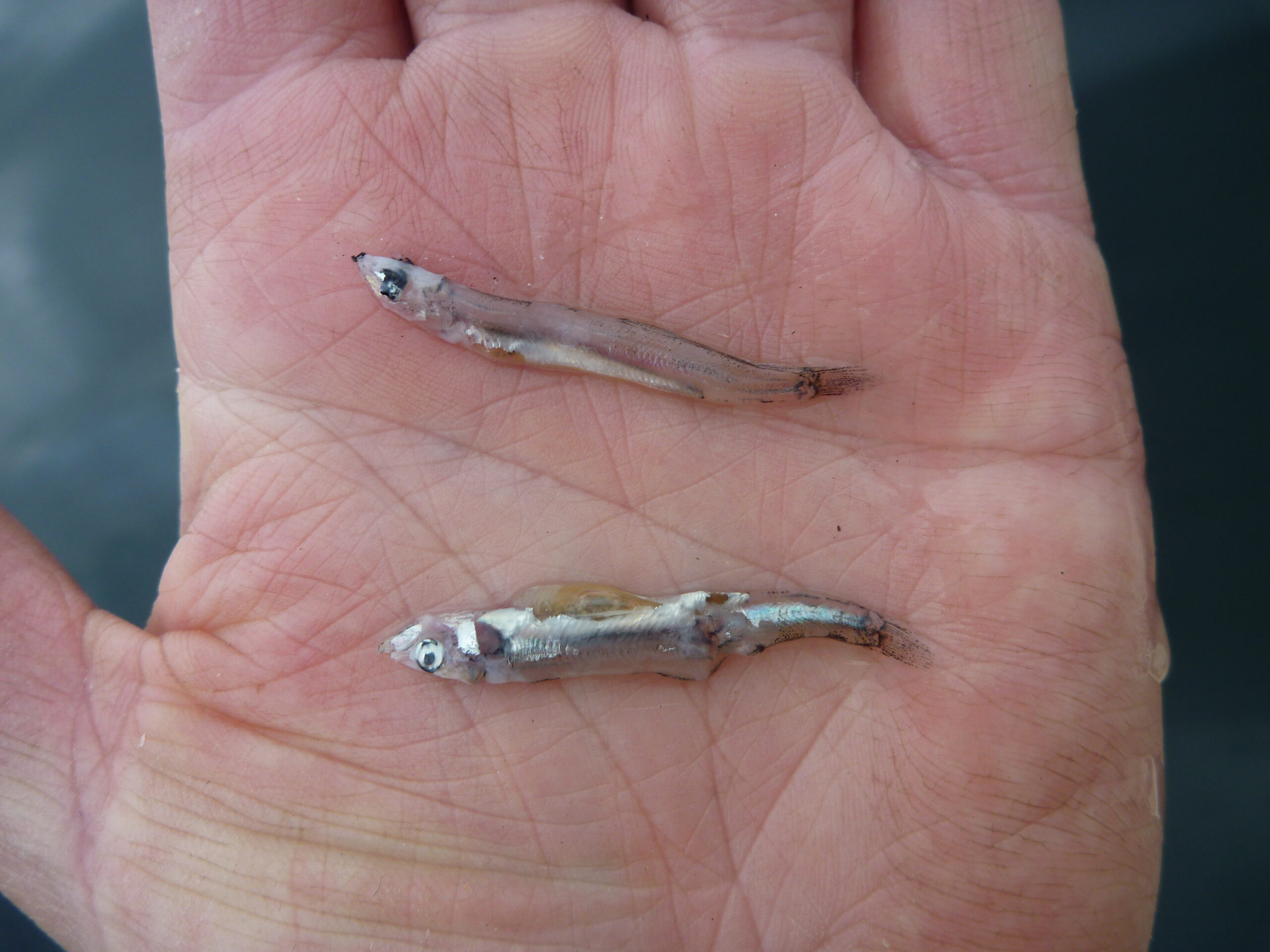
Arctic charr and sea trout were seen feeding on small herrings in the high seas
Sand eels: another crucial food source for sea trout
The sand eel, also known as the sand lance or sandeel, is a small fish belonging to the family Ammodytidae. They are slender, elongated fish with a silvery colouration, perfectly adapted for life in sandy coastal environments. Sand eels are found in the North Atlantic and North Pacific oceans, primarily in shallow waters along sandy beaches, estuaries, and nearshore areas.
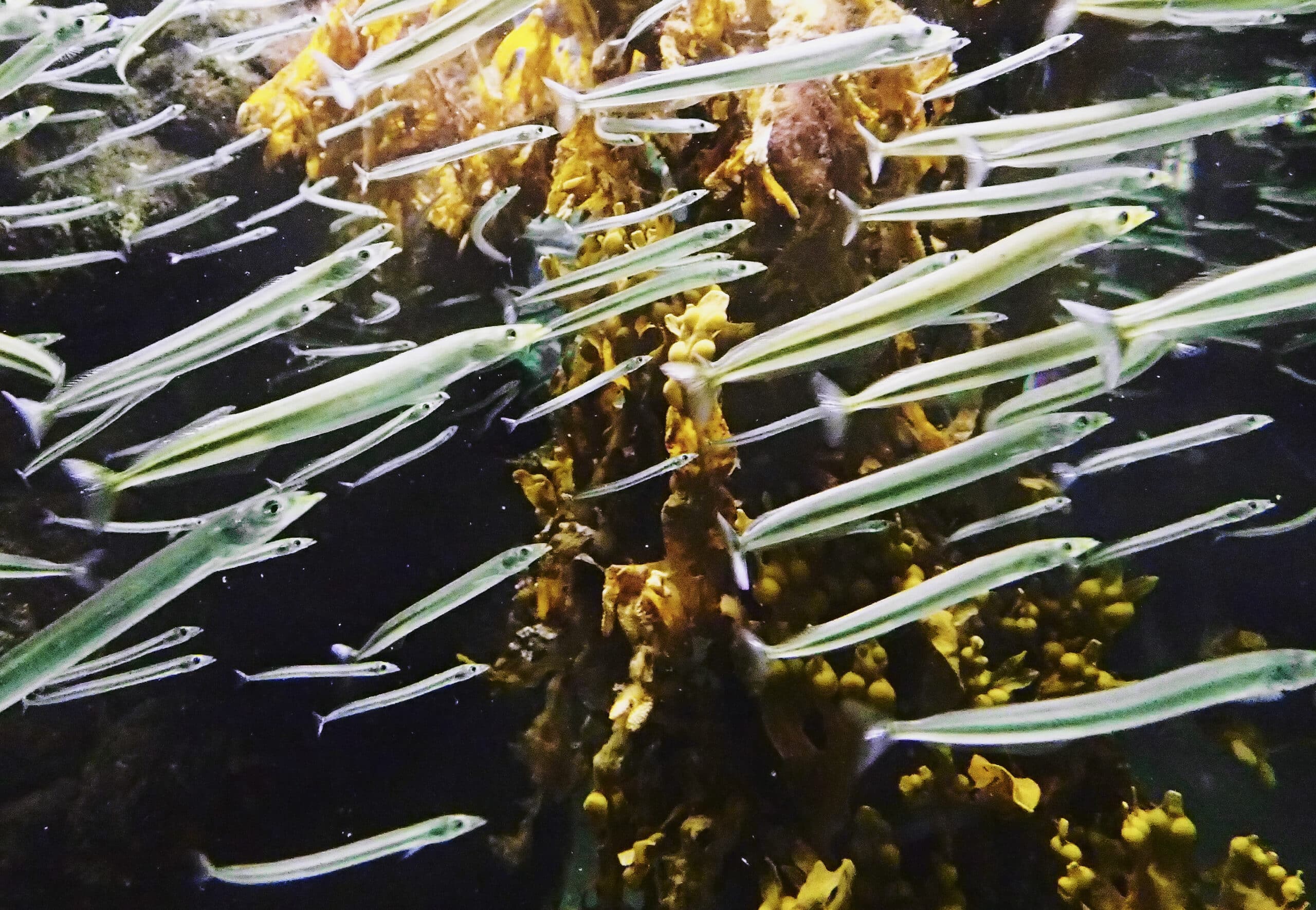
Above: Photographed here is Hyperoplus immaculatus, commonly referred to as the sand eel or sand lancer, names used for numerous species of fish. Sand eels predominantly inhabit areas near the seabed floor, especially regions with smooth gravelly sand bottoms. They play a crucial role as a primary food source for various fish, birds, and whales.
Sea trout feed on eels
Eels where found in stomachs of sea trout during a 1975 survey done by R. Pemberton in North Argyll sea lochs
Anguilla anguilla is the scientific name for the European eel. Sea trout feed on the migration of small baby eels, including larvae and glass eels, as they return from the Sargasso Sea in the North Atlantic Ocean to European coastal waters. The timing of their arrival varies, influenced by factors such as ocean currents and water temperature.
Sea trout feed on smelt
Smelts where found in stomachs of sea trout during a 1975 survey done by R. Pemberton in North Argyll sea lochs
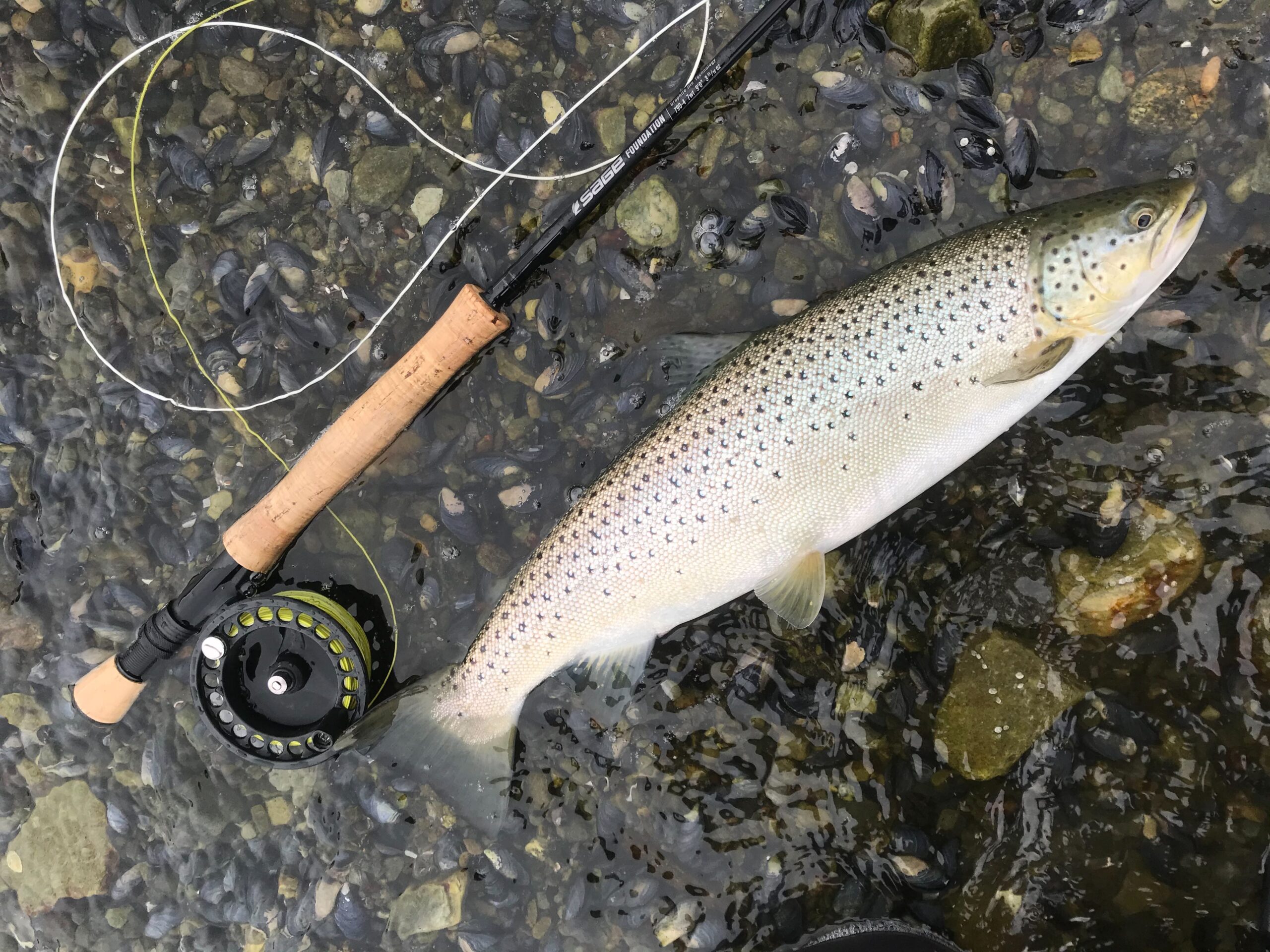
Above: Pictured is a typical late summer sea trout weighing around 1 kilogram or 2 pounds. As the spawning season approaches, the sea trout’s appearance undergoes a transformation. Once silver, its colouration has now taken on a golden hue while its skin and fins toughen in preparation for the journey upstream. This small female is gearing up for the upcoming spawning migration in the river system where it once was born.
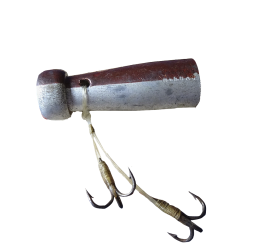
Sea trout are surface-oriented, greedy fish
The first wake fly I encountered was during my summer holidays in Wales in the early 80s, where seasoned sea trout anglers introduced me to this ingenious creation. I vividly remember an old “sewin” angler (Welsh for sea trout) pulling out a large and weathered wake fly from his fishing bag. It was a simple yet effective design, consisting of half a wine cork attached to a large single hook, with additional hooks protruding from the cork on either side. The angler shared with me that this fly was so potent that it had been banned on numerous rivers in Wales. Variations of these wake flies were crafted in various shades and shapes, tailored to different fishing conditions.
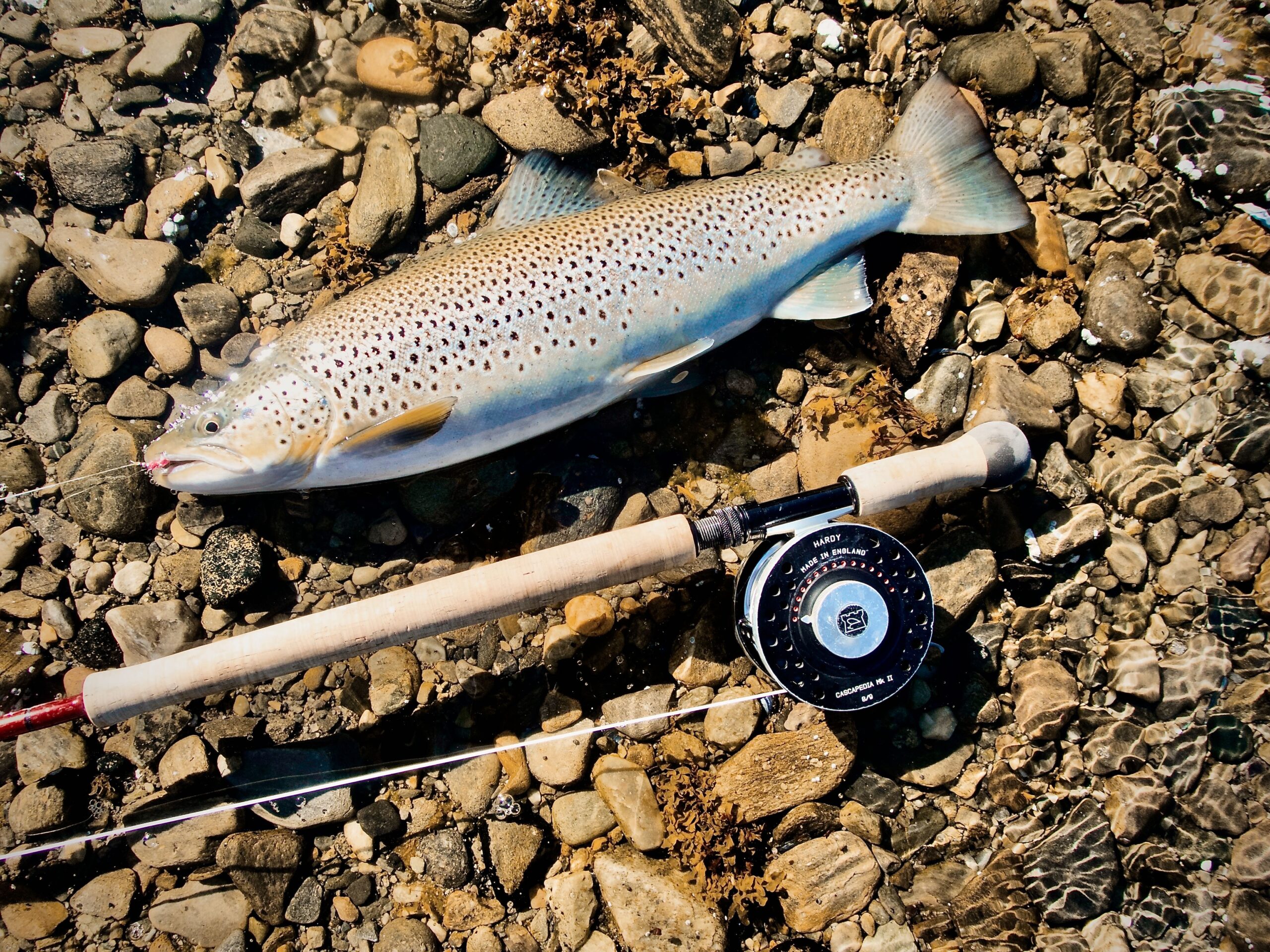
Some sea trout eat in the river
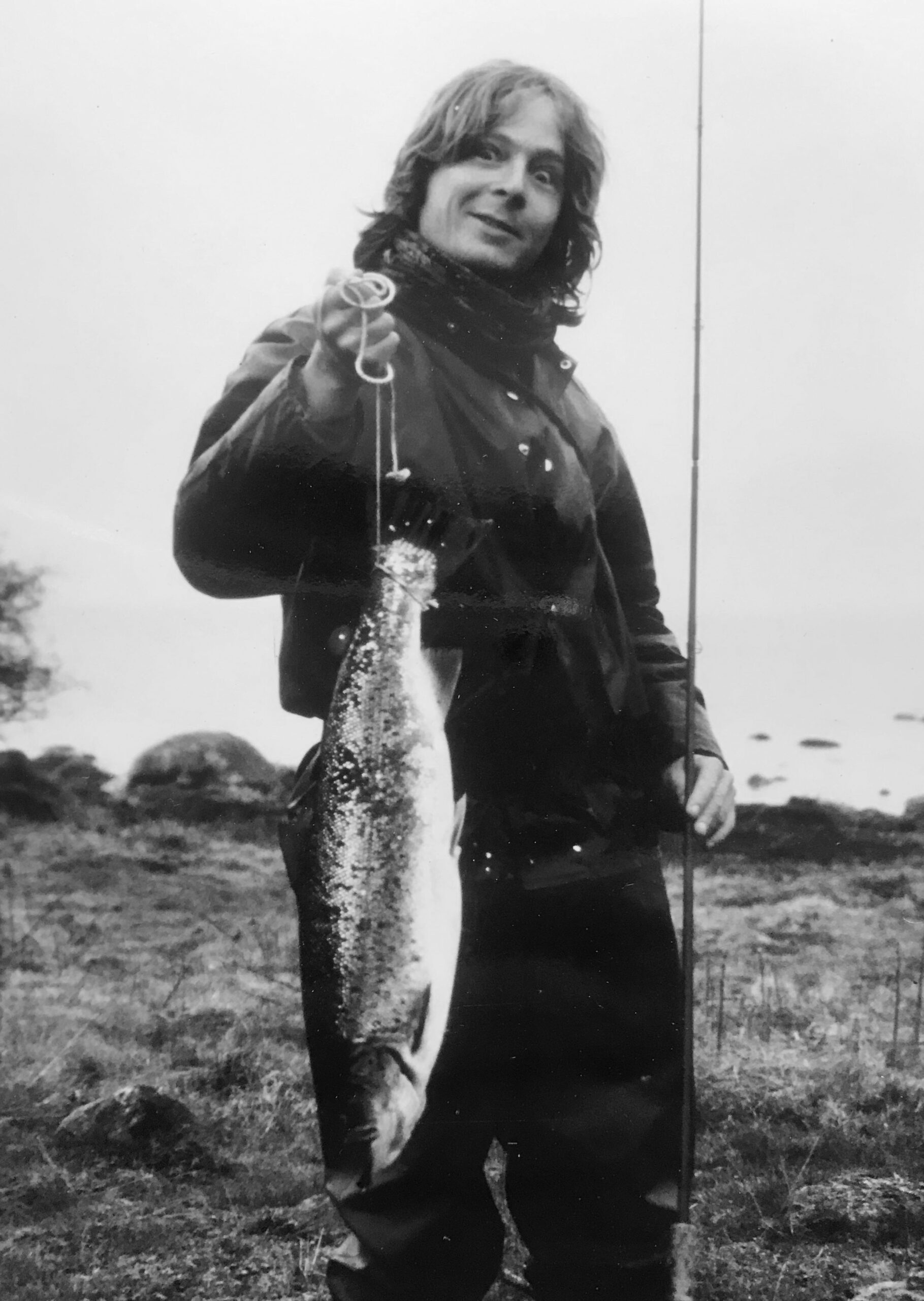
Sea Trout: A Study in Greed and Discernment
What do salmon eat in the sea?
Shrimps: a sought-after meal
* Studies into salmon feeding at high seas in the North-East Atlantic by biologists Jacobsen J. A. and Hansen L. P. (2001) show that shrimps accounted for 95% of the food in number but only about 30% by weight.
By weight, 66% of the stomach content was fish, particularly mesopelagic fish. Some larger pelagic fish, such as herring, blue whiting, and mackerel, were also part of the diet.
Fish and crustacean prey accounted for 96% of the weight of all prey taken by salmon, but
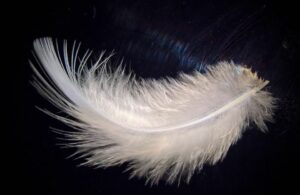
Right: The Frances fly is one of the most successful salmon flies ever made -most likely interpreted by salmon as a shrimp.
Important crustaceans from the Jacobsen and Hansen survey
Studies into salmon feeding at high seas in the North-East Atlantic show that shrimps accounted for 95% of the food in number, but only about 30% by weight
Above: Crustaceans of the genus Thermistor libellula one of the crustaceans salmon, had eaten in the sea north of the Faeroe Islands. Along with other crustaceans, this food source was found in high numbers during the survey conducted during late autumn. Photo Mr Claude Nozères, World Register Of Marine Species
Above: Thermisto libellula in comparison to its cousin: Themisto abyssorum. Photo Mr Kwasniewski Slawomir, World Register Of Marine Species
Above: Meganyctiphanes norvegica swimming with a Thermisto libellula (see above) – Both important animals in the zooplankton food chain. Both are 30 – 45 millimetres big. Photos Mr Claude Nozères, World Register Of Marine Species
Above: Sergestes arcticus (top of photo), another type of shrimp. Below in the same photo is a Nothern krill, Meganyctiphanes norvegica. Photo Mr Claude Nozères, World Register Of Marine Species
Above: Paraeuchaeta norvegica. A marine planktonic copepod 6 – 7 millimetres long – The blue sack at the rear is eggs. Photo © ®Fisheries and Oceans Canada, Jean-François St-Pierre, 2011
Above: Crustaceans of the genus Themisto abyssorum – another important food source found during the survey. Photo Mrs Joanna Legeżyńska, World Register Of Marine Species
Above: From top to bottom: Thermisto libellula, Themisto abyssorum and Thermisto compressa. Three crustaceans were found in great numbers in the survey conducted in the North-East Atlantic. Photo Mr A. Kraft, Alfred-Wegener-Institut
Above: Meganyctiphanes norvegica A krill commonly known as the Northern Krill. A crustacean that is a central figure in the zooplankton mass and an important course of food for whales, birds and fish in the North Atlantic. Photo: © & ® Øystein Paulsen
Above: Hymenodora glacialis Brilliant blood-red shrimp growing to 19 – 20-millimetre. Photo Mr Russ Hopcroft, World Register Of Marine Species
Above: Eusirus holmi – A 40 – 50-millimetre big Gammaridea. Photo Mr Russ Hopcroft, World Register Of Marine Species

Important fish and squid from the Jacobsen and Hansen survey
By weight, 66% of the stomach content was fish, particularly mesopelagic fish. Some larger pelagic fish such as herring, blue whiting and mackerel were also part of the diet.
Above: Maurolicus muelleri: Pearlside. A small silver fish with pigment spots. Size: 40 – 80 mm – a species that lives (mesopelagic) from 20 – 400 meters deep. It lives at greater depth during the daytime and rises toward the surface when it gets dark. Photo Mr Jim Ellis, World Register Of Marine Species
Above: lampanyctus crocodilus or Jewel lanternfish. A small fish that feeds on zooplankton found from 45 – 4000 meters depth – fully grown it will stay between 700-1,000 meters during the day and 4000-1,000 meters at night. Photo Mr Costa, F, Discoverlife
Above: Myctophum punctatum. Its common name is spotted lanternfish. Just like Notoscopelus kroeyeri it lives to the depth of 1000 meters during the daytime but may come to the surface during nighttime Photo Mrs Daphne Themelis, World Register Of Marine
Above: Gaidropsarus argentatus. Commonly known as Arctic rockling, it is a genus of lotid fishes. (Here, a juvenile specimen). Found offshore at depths of 150- 2000 meters on soft bottoms. Photo Mr Claude Nozères, World Register Of Marine Species
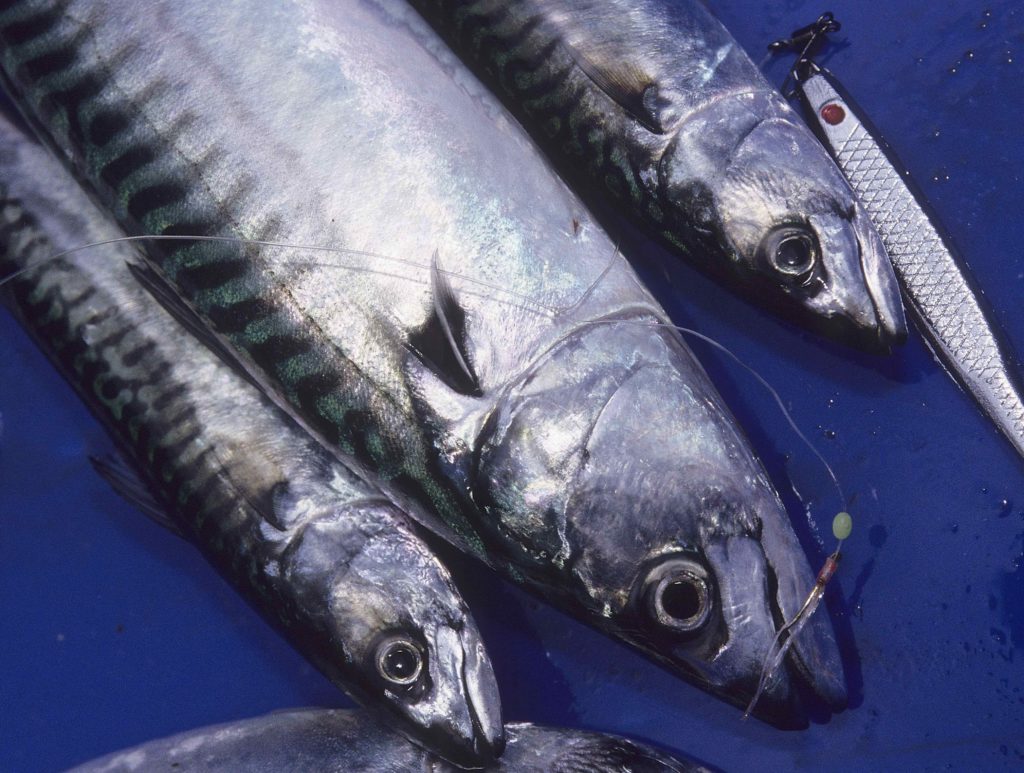
bove: gonatus fabricii or Boreoatlantic gonate squid or boreoatlantic arm hook squid, is a squid in the family Gonatidae. (Here is a juvenile specimen) It occurs in the northern Atlantic Ocean from Canada to the Barents Sea. Grows to 30 cm in length. This tiny beautiful squid was well represented in the Norwegian team’s late autumn and winter surveys. Photo Mr Claude Nozères, World Register Of Marine Species
Above: Arctozenus risso – A long fish of the baracudinas family, occurring singly or in small schools mainly at 200-1000 meters depth. Grows to 29-centimetre. Photo Mr Henk Heessen, World Register Of Marine Species
Above: Notoscopelus kroeyeri, Another deep sea fish that lives to the depth of 1000 meters during the daytime but may come to the surface during nighttime – Grow to 17 centimetres. It has glowing dots along the body that help disguise the fish’s outline when seen from below. Photo Mr Henrik Carl, Fiskeatlas –
Above: Benthosema glaciale. Commonly known as Glacier lanternfish. Also, a small migrating deep-sea fish that surges to 700 – 1000 meters at day time to return close to the surface at night time Photo Fisheries and Oceans Canada, World Register Of Marine
Above: mallotus villosus capelin: The capelin or caplin is a small fish of the smelt family found in the Atlantic and Arctic oceans – A important food source for the Atlantic salmon. Photo Mr Claude Nozères, World Register Of Marine Species
Above: Micromestistius poutassou. Commonly known as Blue Whiting, belonging to the cod family. Found over the continental slope and shelf to more than 1000 meters, but more common at 300-400 meters. Blue whiting can grow to a length of more than 40 centimetres. Photo Mr Henk Heessen, World Register Of Marine Species
Above: Belone belone. Commonly known as garfish. Yet another ferocious predator that the Atlantic salmon will feed on when they find them in the correct size. The garfish, or sea needle, is a pelagic, oceanodromous needlefish found in brackish and marine waters of the Eastern Atlantic, the Mediterranean Sea and the Baltic Sea. The garfish is a long and slender fish that grows to about 50 to 75 centimetres – They hunt in packs near the surface, Photo Mr Pillon Roberto, World Register Of Marine Species
Above: Gasterosteus aculeatus or three-spined stickleback. Lives in marine, brackish, fresh. Most populations are anadromous (they live in seawater but breed in fresh or salty water). Among the larger sticklebacks, it is usually 5 cm (2 in) long.
What do salmon eat in the sea? - Facts from other surveys on salmon feeding
Science will tell us that adult salmon will prey on whatever organisms are present
86 % of the food was Caplin
A survey from 1952 done at the Faroese Islands showed that pre-grilse had eaten amphipods (thermistor gaudichaudi) – and squid (Brachioteuthis riisei), while another study from 1967 done by Shearer and Balmain off Greenland showed that salmon had been taking mainly 86 % Capelin mallets Villousus
Right: mallotus villosus capelin: The capelin or caplin is a small fish of the smelt family found in the Atlantic and Arctic oceans – An important food source for the Atlantic salmon. Photo Mr Claude Nozères, World Register Of Marine Species
Young cod is on the menu in Labrador.
In the coastal waters of Newfoundland, salmon feed mainly on herring, capelin and sand eels, while in Labrador; pteropods, sand eels, young cod and capelin are the primary food (Lear, 1972b.). Reddit (1988) concludes from this wide variety of prey species that adult salmon are opportunistic feeders and prey on whatever organisms are present. Similar conclusions could also be made from examining salmon stomachs from fish caught in the North-east Atlantic.
Above left: Gadus morhua. Common name cod. Here is a trio of tiny cod. Photo Mr Claude Nozères, World Register Of Marine Species
Above right: Gadus morhua (juvenile) – A cod about 10 cm or four in here. Cod is found from the shoreline to the edge of the continental slope. Photo Mr Claude Nozères, World Register Of Marine Species
Scottish salmon have been observed feeding on ragworms.
Some Scottish salmon, caught in drift nets, were found to have consumed polychaete worms (Nereis spp.), amphipods, euphausiids (Meganyctiphanes norvegica), as well as herring, sprats, whiting, and sand eels (Fraser, 1987).
Photo on the right: Polychaete worms, commonly known as Ragworms (Nereis spp.), are inhabitants of soft and muddy bottoms, where they dwell in a network of burrows. They emerge from their hiding places to spawn and are sought after as prey by various marine animals. Photograph Copyright © 2008 Field Studies Council.
How do salmon get to the food out at sea ?
Climate changes may alter the life at sea – and stocks of Atlantic salmon
Certain scientists have proposed that the notable shifts observed in sea-surface temperatures across the North Atlantic might have played a role in heightened mortality rates among young salmon, often referred to as post-smolt. It is theorized that these temperature variations could be linked to the pronounced decline witnessed in Atlantic salmon populations over recent decades.

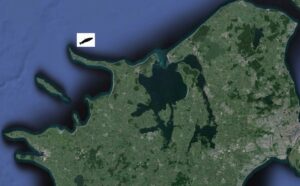
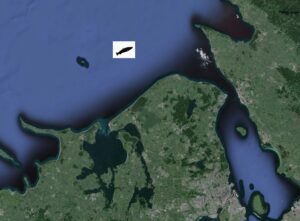
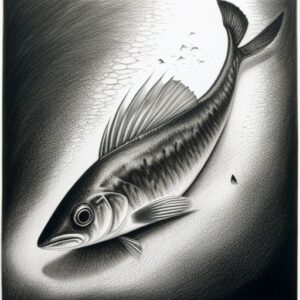 Both in freshwater and the sea, the brown trout show opportunistic feeding behaviours. The marine diet of sea trout is diverse and influenced by factors such as season, fish size, age and where they live. In the following text, we will explore some of the bait fish sea trout feed on
Both in freshwater and the sea, the brown trout show opportunistic feeding behaviours. The marine diet of sea trout is diverse and influenced by factors such as season, fish size, age and where they live. In the following text, we will explore some of the bait fish sea trout feed on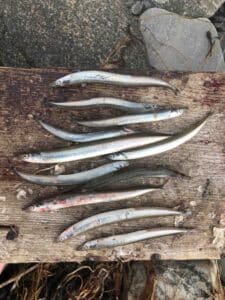
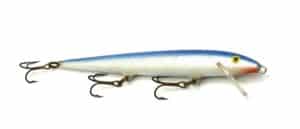 A famous bait, such as the Rapala Original Floater 11cm shown in the image, is one of those artificial baits sea trout anglers turn to when they need a bait that is true to the real thing.
A famous bait, such as the Rapala Original Floater 11cm shown in the image, is one of those artificial baits sea trout anglers turn to when they need a bait that is true to the real thing.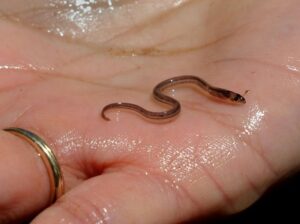
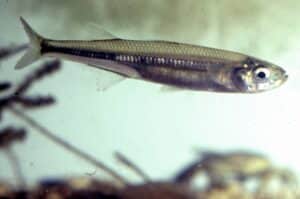
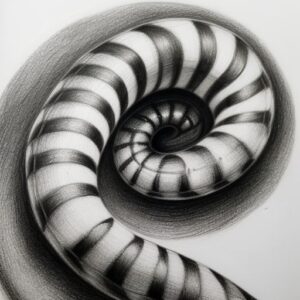 Both in freshwater and the sea, the brown trout show opportunistic feeding behaviours. The marine diet of sea trout is diverse and influenced by factors such as season, fish size, age and where they live. In the following text, we will explore some of the bait fish sea trout feed on
Both in freshwater and the sea, the brown trout show opportunistic feeding behaviours. The marine diet of sea trout is diverse and influenced by factors such as season, fish size, age and where they live. In the following text, we will explore some of the bait fish sea trout feed on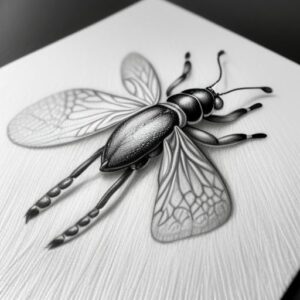 Both in freshwater and the sea, the brown trout show opportunistic feeding behaviours. The marine diet of sea trout is diverse and influenced by factors such as season, fish size, age and where they live. In the following text, we will explore some of the bait fish sea trout feed on
Both in freshwater and the sea, the brown trout show opportunistic feeding behaviours. The marine diet of sea trout is diverse and influenced by factors such as season, fish size, age and where they live. In the following text, we will explore some of the bait fish sea trout feed on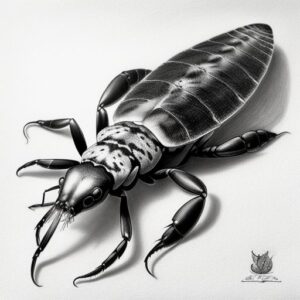 Both in freshwater and the sea, the brown trout show opportunistic feeding behaviours. The marine diet of sea trout is diverse and influenced by factors such as season, fish size, age and where they live. In the following text, we will explore some of the bait fish sea trout feed on
Both in freshwater and the sea, the brown trout show opportunistic feeding behaviours. The marine diet of sea trout is diverse and influenced by factors such as season, fish size, age and where they live. In the following text, we will explore some of the bait fish sea trout feed on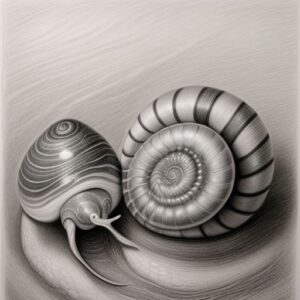 Both in freshwater and the sea, the brown trout show opportunistic feeding behaviours. The marine diet of sea trout is diverse and influenced by factors such as season, fish size, age and where they live. In the following text, we will explore some of the bait fish sea trout feed on
Both in freshwater and the sea, the brown trout show opportunistic feeding behaviours. The marine diet of sea trout is diverse and influenced by factors such as season, fish size, age and where they live. In the following text, we will explore some of the bait fish sea trout feed on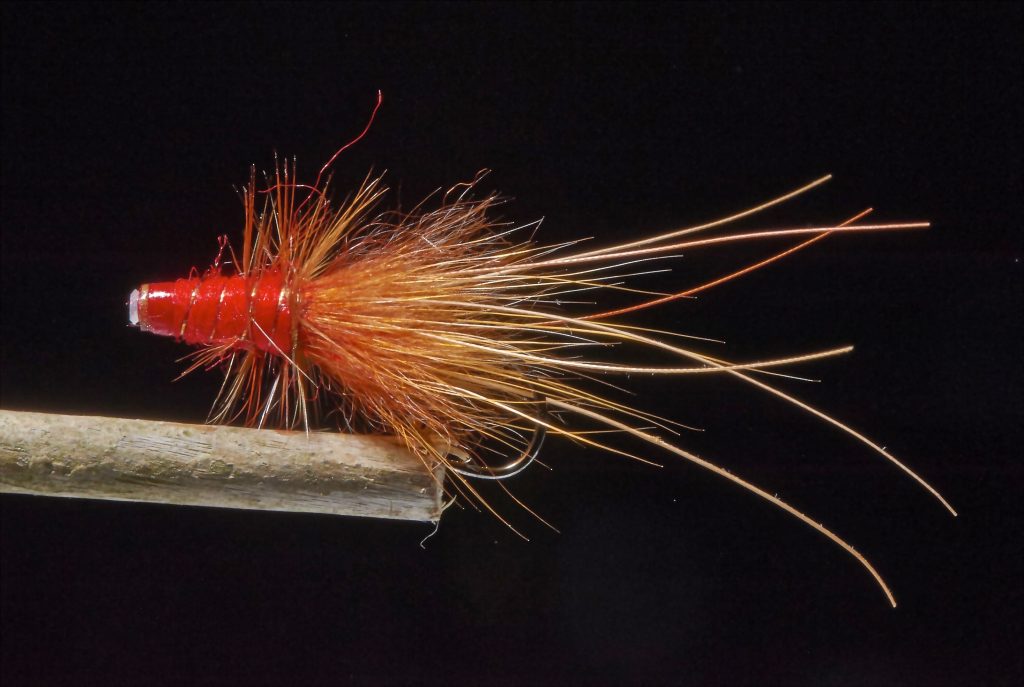
 Read the interesting report by Mr. Jan Arge Jacobsen and Lars Petter Hansen
Read the interesting report by Mr. Jan Arge Jacobsen and Lars Petter Hansen